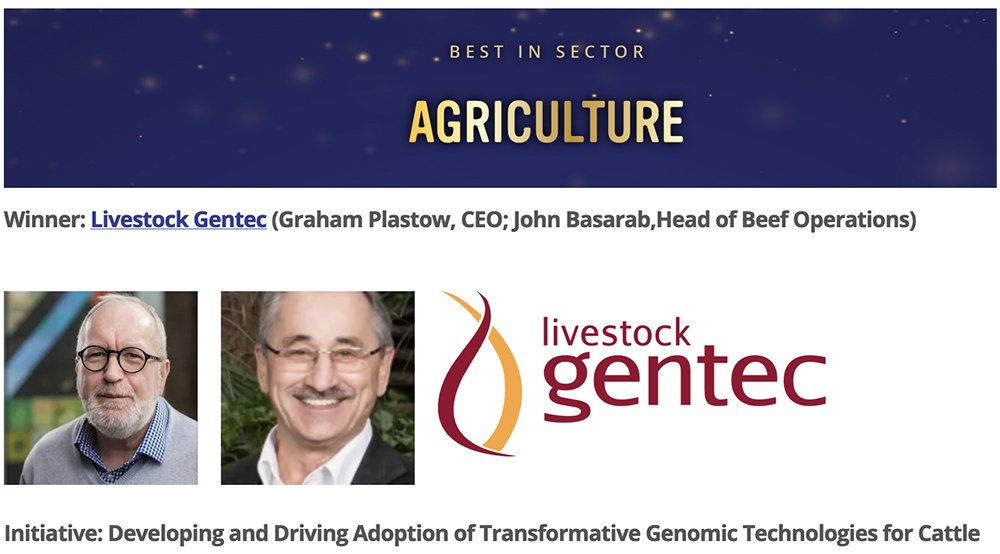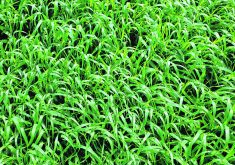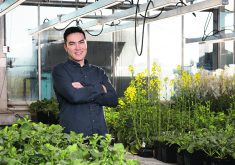Alberta’s Livestock Gentec was formed in 2010 to use genomics to help producers improve profitability and sustainability
CALGARY — An applied research centre using genomics to help beef producers sharpen their competitive edge has been honoured with a Best in Agriculture Sector Award for Alberta at the ASTech Awards.
“We’re very proud that our team received that award,” said John Basarab, head of beef cattle operations at Livestock Gentec. “We’re hoping that it is recognized by producers and funders, and the industry and other researchers, and what we hope that will do is allow us to do a lot of good things for the livestock industry in Canada.”
Read Also

Beef cattle more prone to trace mineral deficiencies
The trace mineral status of our cows and calves is a significant challenge for western Canadian producers and veterinarians.
Related stories:
- Beef setor faces genomic roadblocks
- Alta. agency identifies new research focus
- New research projects focus on genomics
- Producer takes chess approach to cattle operation
The Best in Agriculture Sector Award recognizes the discovery, development and commercialization of new technologies or processes that significantly benefit the agriculture industry. Livestock Gentec was recently selected from among five candidates in that category at the annual ASTech Awards, which honour innovators in science and technology in Alberta.
As a centre for applied research and commercialization based at the University of Alberta, Livestock Gentec was co-founded in 2010 by Basarab and chief executive officer Graham Plastow. It uses genomics to help beef producers improve profitability and sustainability, said Basarab.
“The study of genomics is the study of DNA, and essentially what we do is look for the relationships between the variability that occurs within the DNA and traits that are important for agricultural production. For beef cattle, it’s things like growth, carcass characteristics, meat quality, fertility, feed efficiency, even methane emissions.”
Researchers aim to eliminate much of the guesswork faced by beef producers when they are selecting cattle for preferred traits, said Basarab.
However, the beef industry has been slower to adopt the technology than dairy producers, he said.
“Essentially in 2009, the Canadian dairy industry started to incorporate genomic evaluation in their genetic selection at a very high level, and as a result of that really made tremendous progress in their milk profitability index, which is how well their selection program is working.”
There are fewer dairy cattle breeds than beef cattle breeds, which is part of the reason for dairy’s success, said Basarab.
“And so, when you’ve got many different breeds, your industry becomes fragmented.”
The information transfer from packing plants back to cow-calf producers and breeders is also limited because of the compartmentalization of the beef industry, he said.
“In other words, it’s lost, and so the industry is what we would call not vertically integrated, and of course there are exceptions, but basically the industry is less co-operative and less vertically integrated just purely because of how it’s fragmented.”
However, new technologies associated with genomics are rapidly being adopted by large cattle operations in Alberta purely through the selection of their bulls, said Basarab.
“For example, when these producers buy beef bulls, they immediately will be looking at their, what we call, breeding values,” he said.
“In the beef industry, they’re called expected progeny differences, but their breeding values are there, so breed associations, all of them use genomic technology. They all use lots of genotyping in the production of their breeding values to increase their accuracy.”
Some tools offered by Livestock Gentec are for hard-to-measure traits, such as producing breeding values for feed efficiency, said Basarab.
“And that trait, not many breed associations have a true breeding value for feed efficiency.”
Genomics technology is essential to ensuring Alberta has a thriving beef industry, said David Chalack, chair of the provincial Results Driven Agriculture Research (RDAR) agency.
“In the face of challenging economic conditions and drought, genomic advancements will enable our producers to compete globally — that is why genetics are a major focus of RDAR,” he said in an agency statement.
RDAR has provided more than $3.5 million in funding during the last three years for projects at Livestock Gentec, including research to enhance meat quality. Other projects include boosting resilience to diseases and extreme temperatures, along with increasing production sustainability while reducing the environmental footprint.
Livestock Gentec has been working with different vendors and partners in the beef industry to create genomics tools for cow-calf producers, said Basarab, who is also an RDAR research professor in livestock genetics at the University of Alberta. He pointed to the Replacement Heifer Profit Index, which was developed from nearly 10,000 mating opportunities involving commercial cows.
It aims to improve the ability of cow-calf producers to reliably pick replacement heifers “that are going to conceive and then calve, and then stay in the herd for quite a while, and that index has been successful,” he said.
“If you got rid of those bottom-indexing cows, and instead of having 30 open, you had 23 open, essentially you’ve got seven more calves. Immediately, your income would increase by seven times whatever a weaned calf would be. Right now, a weaned calf is worth $1,800, so a lot of income.”
Fertility traits are about 10 times more important than carcass traits in terms of improving profitability for cow-calf producers, and five times more important than growth traits, said Basarab.
“I mean, you’ve got to get a calf before you get those other things.”
Livestock Gentec would also like to work on new and novel traits such as finding a breeding value for reducing methane from beef cattle, “which is a socially important thing to do,” he said. “And so, that’s probably one of the things that we would be looking at next.”
















